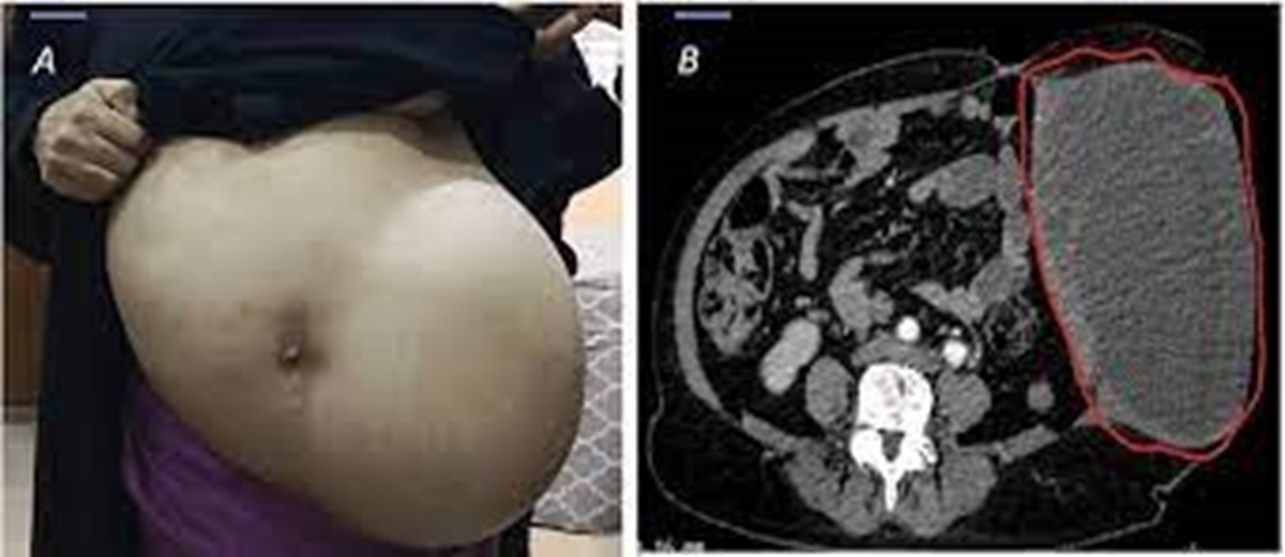A nurse is gathering information from a 1-year-old child who has been diagnosed with Wilms’ tumor. Which of the following symptoms should the nurse anticipate?
Jaundice
Abdominal mass
Swollen joints
Diarrhea
The Correct Answer is B
Choice A rationale
Jaundice, a yellowing of the skin and eyes, is not typically a symptom of Wilms’ tumor. It is more commonly associated with conditions that cause liver dysfunction.
Choice B rationale
An abdominal mass is one of the most common symptoms of Wilms’ tumor. Parents or healthcare providers may feel a lump or swelling in the child’s abdomen.
Choice C rationale
Swollen joints are not a typical symptom of Wilms’ tumor. They are more commonly associated with conditions that affect the joints, such as juvenile arthritis.
Choice D rationale
Diarrhea is not a typical symptom of Wilms’ tumor. It is more commonly a symptom of gastrointestinal illnesses.

Nursing Test Bank
Naxlex Comprehensive Predictor Exams
Related Questions
Correct Answer is A
Explanation
Choice A rationale
Tinea Capitis, also known as scalp ringworm, is primarily transmitted through direct contact with infected personal items such as towels, combs, or hats.
Choice B rationale
Exposure to worm eggs through bare feet is not a mode of transmission for Tinea Capitis. This is more commonly associated with a different type of parasitic infection known as hookworm.
Choice C rationale
Sitting on worm eggs is not a mode of transmission for Tinea Capitis. This is a misconception and there is no scientific evidence to support this claim.
Choice D rationale
Airborne droplet transmission is not a mode of transmission for Tinea Capitis. Tinea Capitis is caused by a type of fungus, not a virus or bacteria, and it does not spread through the air via droplets.
Correct Answer is ["1170 "]
Explanation
Step 1 is to convert all fluid intake to mL.
Using the conversion factor 1 oz = 30 mL7 and 1 cup
= 240 mL8, we get: 1 cup of coffee = 240 mL 4 oz of orange juice = 4 × 30 mL = 120 mL 3 oz of water = 3 × 30 mL = 90 mL 1 cup of flavored gelatin = 240 mL 1 cup of tea = 240 mL 5 oz of broth = 5 × 30 mL = 150 mL 3 oz of water = 3 × 30 mL = 90 mL Step 2 is to add up all the mL values: 240 mL (coffee) + 120 mL (orange juice) + 90 mL (water) + 240 mL (gelatin) + 240 mL(tea) + 150 mL (broth) + 90 mL (water) = 1170 mL So, the nurse should record a fluid intake of 1170 mL.
Whether you are a student looking to ace your exams or a practicing nurse seeking to enhance your expertise , our nursing education contents will empower you with the confidence and competence to make a difference in the lives of patients and become a respected leader in the healthcare field.
Visit Naxlex, invest in your future and unlock endless possibilities with our unparalleled nursing education contents today
Report Wrong Answer on the Current Question
Do you disagree with the answer? If yes, what is your expected answer? Explain.
Kindly be descriptive with the issue you are facing.
